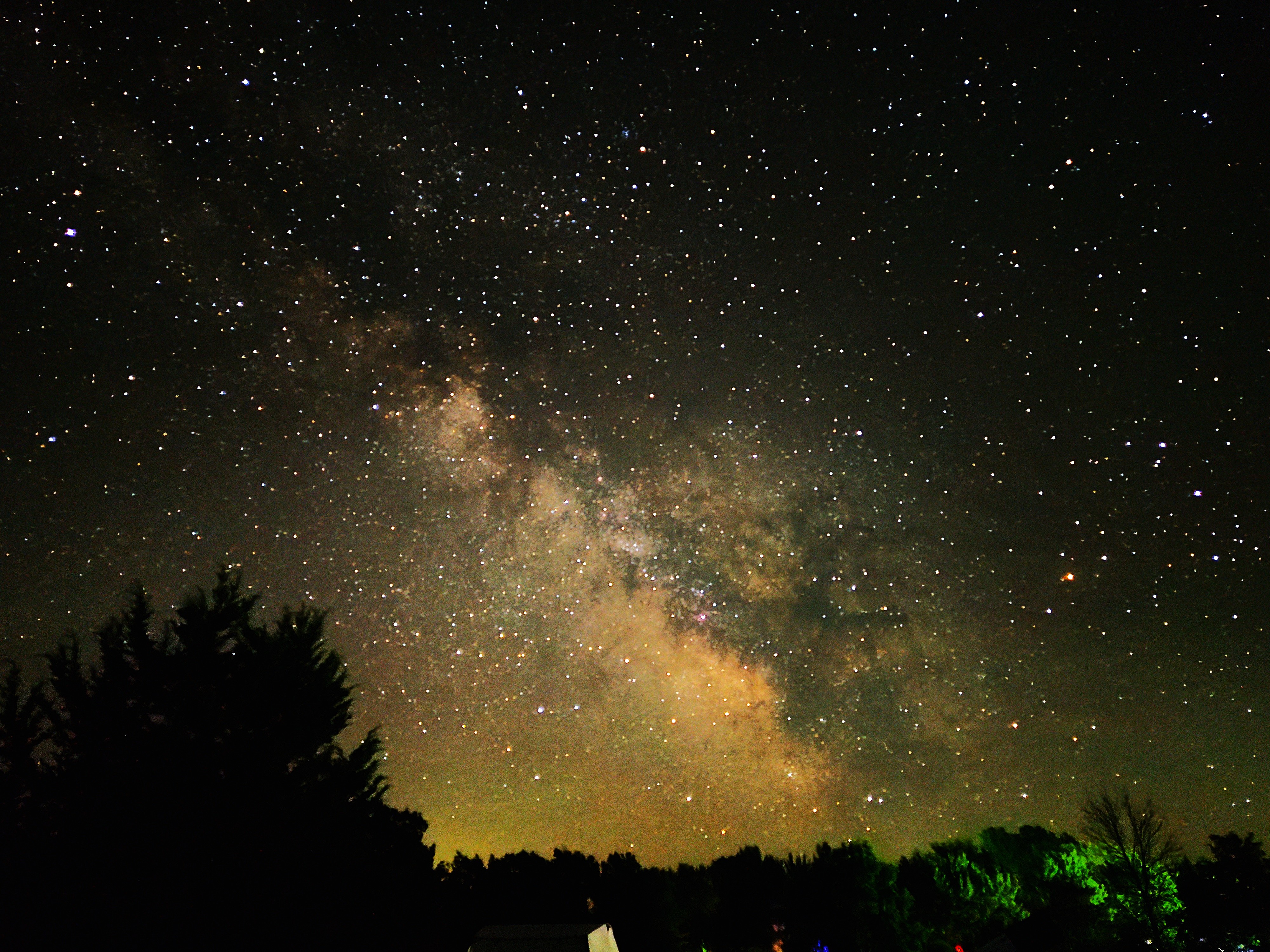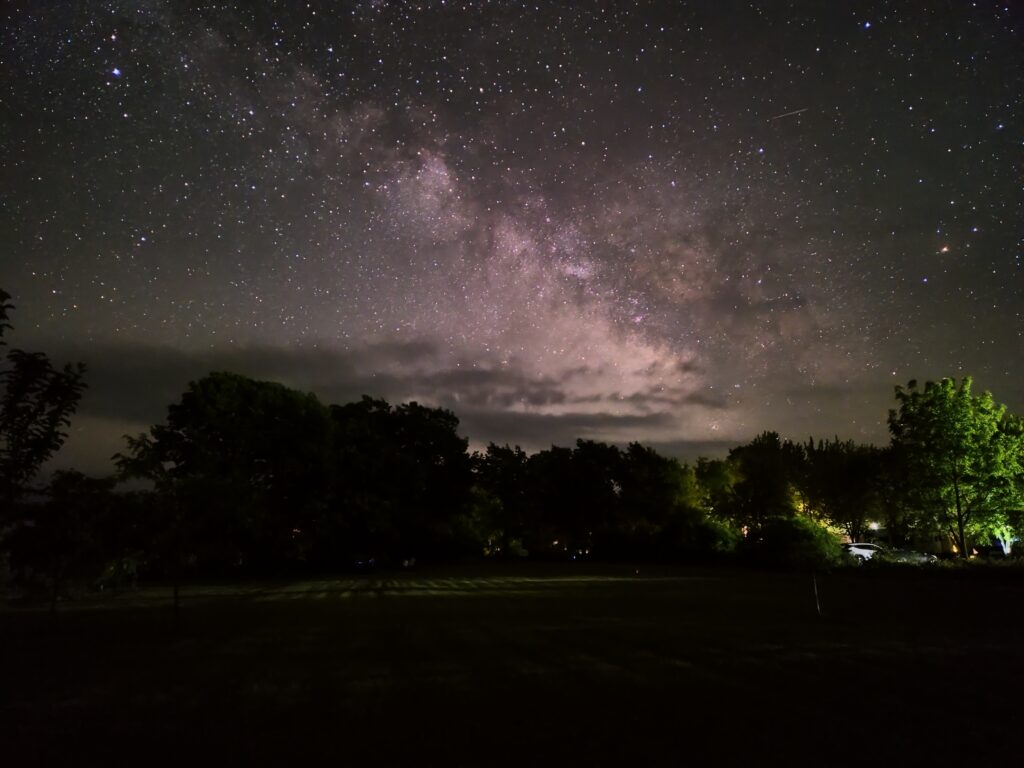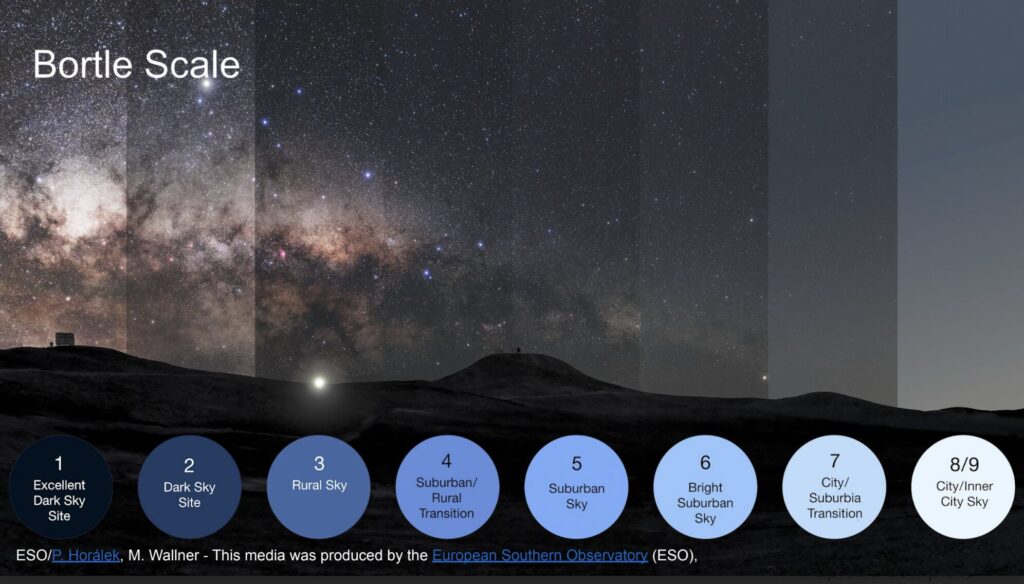 Spectacular shot of the South Shore at night by Steven Burr.
Spectacular shot of the South Shore at night by Steven Burr.
Council has voted to consider making the County’s South Shore a Dark Sky Preserve.
The shore is the last undeveloped area on the north coast of Lake Ontario. While much of the land and habitats are protected, the last piece for conservation efforts is protecting the night sky.
Steven Burr, a member of both the South Shore Join Initiative and the Royal Astronomical Society of Canada, gave a deputation to the Committee of the Whole this month, urging Council to extend the support required to make the South Shore from Point Petre to Prince Edward Point a Dark Sky Preserve. Council voted 9-4 in favour.
The strongest of three Dark Sky Designations, Dark Sky Preserves are far from urban centres, have minimal “sky glow,” and offer accessible lookout points for viewing the night sky.
The others are a Nocturnal Preserve, a remote dark site with few resources, designated more for the protection of flora and fauna than for public amenities, and an Urban Star Park, which is a dark site within, or close to, urban areas. It is not truly dark, but offers good access to the public for sky- and star-gazing.Dark Sky designations are not just about access to star gazing —although that’s part of it. They also contribute to ecological conservation.
“Plants are affected by the colour and duration of lighting,” said Mr. Burr. “Artificial lighting also affects the biological rhythm in animals, modifying their behavioural patterns.”

“Our vision is a permanently protected South Shore where together biodiversity and people thrive,” said Cheryl Anderson of the SSJI.
“Daily periods of light and dark are required to maintain the health of all living things,” she noted, emphasizing the disorientation birds and bats experience as a result of light pollution.
Dark skies are measured using the Bortle scale, which classifies light pollution on a scale from one to nine. Whereas classes eight and nine are found in the depths of the inner city, and one is perfect darkness, rural and suburban landscapes fall in the middle in the three to four range.
“In 2016 satellite data indicated the South Shore of Prince Edward County was Bortle class two,” said Mr. Burr. “More recent data indicates it is a Bortle class three sky, a rural sky,” he added.
There has been an increase of 7-10 percent in sky brightness over the last dozen years.
Bringing the area back down to Bortle class two is a long term goal of both the SSJI and RASC.
”It’s not something I think is going to happen overnight,” said Mr. Burr. Bringing back the dark would take about ten years, and require support via municipal policy in the form of light pollution bylaws and retrofitting existing municipal lighting.
Mr. Burr also asked for a Letter of Support, and a Memorandum of Understanding to designate the Mariners Park a night sky viewing point.

These conditions must be met to receive designation as a Dark Sky Preserve.
Mr. Burr stressed that the outcome is not to restrict development, but to adapt to the right shade and intensity of light.
“You can have more development, but if you have the appropriate lighting you can preserve the night sky,” he said. “Instead of a bright white LED light, you have an amber LED light.”
The proposal was met with a mix of support and skepticism from Council.
“I’m not in favour of this at all because it looks like another overlay on our planning documents,” said Councillor David Harrison.
Councillor Phil St-Jean wondered if bylaws would overstep on the rights of property owners.
“It’s not telling the owner he can’t have lighting,” Mr. Burr clarified. “It outlines what is acceptable today for lighting.”
Councillor Kate MacNaughton expressed support, and noted that light pollution has been a concern for youth groups and the Environmental Advisory Committee.
“A recent grad of PECI was planning on doing what you’re doing here today,” she told Mr. Burr.
Councillor Bill Roberts noted that research from the Global Sustainable Tourism Council shows the economic benefit of “astro-tourism” for rural communities, making it a sustainable way to diversify the economy.
Not ready to commit to the designation requirements, Council carried a motion to direct staff to explore opportunities to create a Dark Sky Preserve and come back with recommendations.
See it in the newspaper